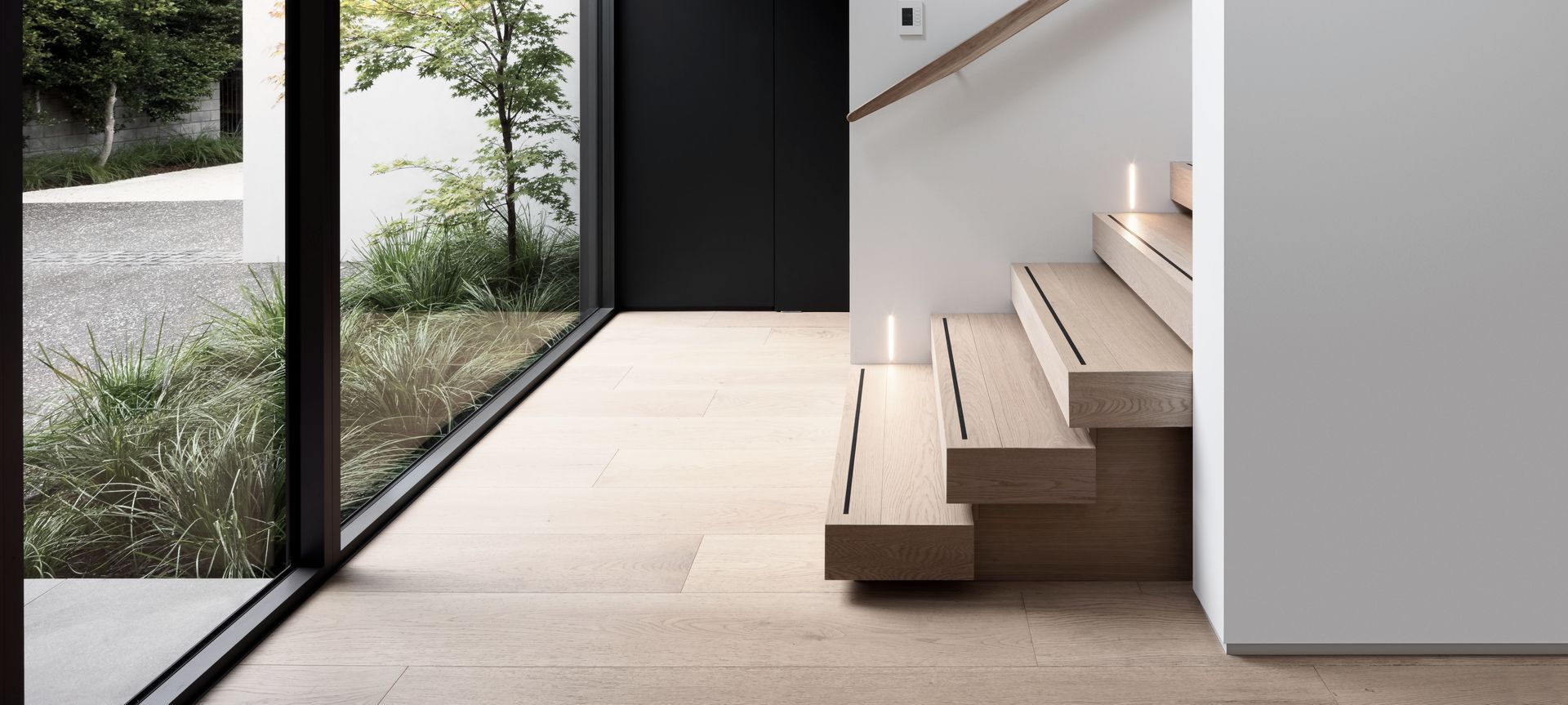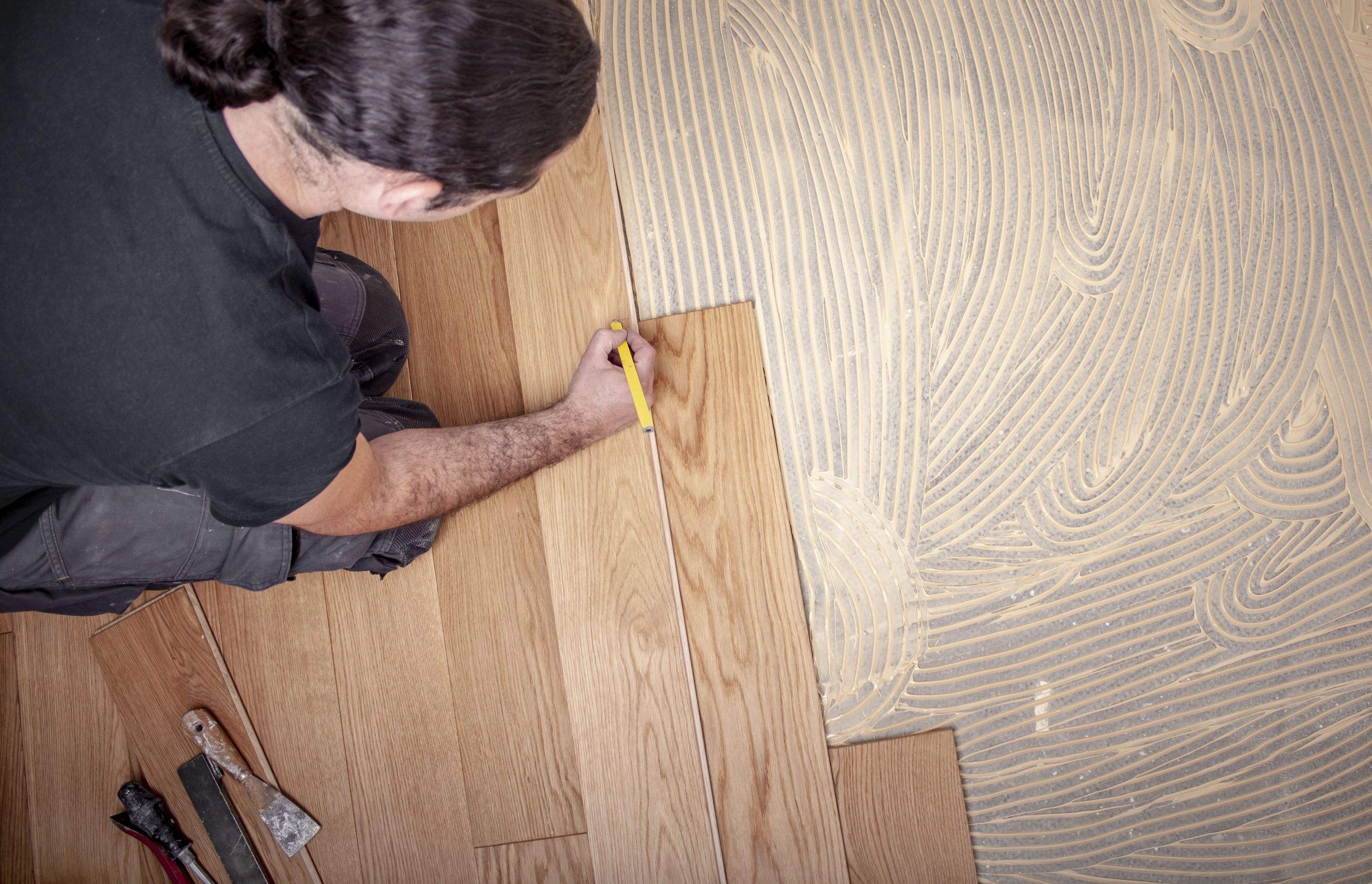Wood flooring fundamentals
Written by
19 September 2021
•
9 min read

Ask any interior designer or architect about flooring and they will tell you that the choice you make will be crucial to the look and feel of your interior. Likewise, your choice should form the foundation of the colour and material palette for the rest of your home.
Flooring has a significant impact on the overall aesthetics of your living spaces—it’s also one of the more significant costs in a new home or renovation project. As such, choosing the right product and ensuring it is installed to a high standard is imperative.
We recently sat down with flooring expert Aaron Wiltshire, Auckland Territory Manager for Forté Flooring to discuss the current costs of engineered wood flooring and the factors that play a part in the price of supply and installation.
“Engineered wood is one of the most stable, cost-effective and environmentally friendly choices of flooring for many reasons,” says Wiltshire. “At Forté Flooring, we understand that buying a wooden floor is a huge decision; therefore, the goal of this discussion is to empower consumers with honest and accurate information to help them make the best-informed decision for their homes.”
Wiltshire starts by saying that there will always be cheaper products on the market, as well as companies offering cheaper installation, but these will inevitably come at a cost further down the line. “A wood floor is such an important aspect of your home that it should be thoroughly and systematically thought through before installing.”

Engineered wood flooring: what to look for
Here are the ten prime factors that influence the cost of engineered wood flooring, according to Wiltshire:
1. Warranty and Support
A wood floor is a significant investment. If something goes wrong during the installation, you will need reassurance that any problems or issues will be fixed. If you are purchasing from a cheaper or overseas supplier, ask yourself—who will turn up to fix the problem and will they back up their product if something goes wrong?
Forté Flooring will be with you every step of the way—from the initial contact to the installation process and through to the aftercare of your wooden flooring. All of our floors carry a 25-year structural warranty, so you can rest easy knowing that the investment you've made will be covered. We also stand behind our coatings and if there is an obvious fault with the product, we will repair it.
We have been in the business of designing and sourcing wood flooring since 1995 and have learnt not to take shortcuts or to compromise on quality. Unlike many other products on the market, all our products have been subjected to rigorous research and development testing. All shipments go through strict quality control checks, ensuring the very best quality products get delivered to your door.
2. Designed for New Zealand conditions
Forté Flooring products have been designed specifically for New Zealand's environment—from the subtropical conditions in the Far North to the frosty winter temperatures of Queenstown. Every aspect of each of our products has been considered. These include the moisture level in the plywood, the veneer thickness, the colour of the filler in the knots, the percentage of short lengths and the final protective coating. This is why our products are some of the best out there.
3. Wood grade and sustainability
When a supplier refers to the character, feature, prime, rustic, light feature, select, or clear of wood flooring, they are talking about the grade of the wood. These phrases describe any imperfections in the wood, such as knots, cracks, burls, or sapwood, which will impact the price.
For example, the more knots, cracks, and imperfections the wood has (character, feature and rustic grades), the lower the cost. You will be paying a premium price for wood that is clear of imperfections (select and prime grades), as the wood is harder to come by. Putting that into context, there is only a 10 per cent yield of prime or select grade oak in one tree. However, in New Zealand, grades such as rustic, feature and character are more popular, as many people prefer a more natural-looking floor.
Sustainability also plays a significant role in the cost of wood flooring. An engineered wood floor uses approximately one-third of slow-growing hardwood compared to an equivalent solid-wood floor, making it a more sustainable option.
4. Veneer thickness
The veneer thickness refers to the top layer of natural timber used on the floor. The thicker the veneer, the more re-sands it can have, so the more it costs. Most engineered wood flooring has between a 2mm and 6mm veneer of natural wood, backed with a multi-layer core to keep it stable. The most common veneer thickness is 4mm, giving enough timber for up to three re-sands over its lifespan. A thin veneer will not be able to be re-sanded, thus reducing its lifespan.
Depending on the thickness of the veneer, an engineered wood floor can be re-sanded up to five times, giving it a lifespan of 30 to 50 years.
5. Plank width and length
Engineered flooring comes in planks with a tongue-and-groove or a locking joining profile. If you are looking for longer and wider planks, then be prepared to pay more. The wider and longer the plank, the larger and older the tree must be, plus the fewer imperfections it must have, which make wide and long planks more expensive.
The standard width is 190mm, as it is aesthetically pleasing in most spaces. The standard plank length is approximately 2.2 metres, which is an efficient length for shipping and keeps the price reasonable.
6. Prefinished versus sanding and finishing on site
Prefinished means the floor planks come pre-coloured and coated, meaning there are no additional coats once installed. Prefinished flooring is more cost-effective and gives a better finish than sanding and staining on site. All our floors are prefinished with the highest quality matte lacquer, which provides them with ultimate durability, a higher level of finish and reduces downtime on site.
7. Stain colour and special effects
It can take multiple layers of coloured stain to achieve the look of a specific coloured wood. If the colour is complex, the wood is run through the coating machine several times to apply additional layers of stain. This will result in a higher cost, as it takes more time and more materials.
Special effects, such as handcrafted bevels, rounded knots, hand-scraping and a sawn effect can be achieved. However, this will increase the price due to increased labour.
8. Durability of protective coating
Engineered flooring is always finished with a protective coating to protect it from damage and moisture. This finish is one of the most critical aspects of your flooring, as the final protective coating determines the longevity of your flooring and how it will wear. There are two main types of coating: polyurethane and hard wax oil. Generally, the more coats that are applied, the better protection there is from scratching and staining. The number of coats and their method of application will determine the cost. Most of our flooring collections use a low-VOC, water-based polyurethane, which gives the look of natural oil with added durability and better water resistance.
9. Glued-down versus floating
We can say without a doubt that glued-down is the best installation method for laying wooden flooring and the only way that we recommend. Not only does a glued-down, engineered wood floor give you a superior sound and feel in your home, but it also adds longevity to its lifespan.
Many people may not know that a floating engineered wood floor cannot be re-sanded, as it sits on a foam underlay—as opposed to being fixed directly to the substrate—causing the sander to bounce and leave sanding marks on your floor. Because of this, it cuts down the lifespan of your flooring by decades.
So, although a glued-down installation costs more than the floating installation method, it is very much worth the investment due to the increased longevity of the flooring.
10. Quality of core and base layers
There are several different species of wood base layers. The most popular and best quality backing or base layer options are cross-directional birch plywood and hevea, which are slightly more expensive than the rest.

Forté Flooring: undeniable quality
Forté Flooring has scoured the globe in search of the best-engineered wood flooring, and we can confidently say that our collection is world-leading, both in style and quality, says Aaron.
“Over the years, we have been through many factories around the world. We, therefore, have an excellent understanding of how great quality engineered wood flooring is manufactured.
“We have also attended numerous flooring trade shows and have spoken to hundreds of suppliers, agents and factory owners, hand-selecting the best partners to work closely with in designing products that are best suited to the climatic conditions we have here in New Zealand.”
Aaron says the average supply and install costs of engineered wood flooring glued-down onto a timber subfloor is $285–300 per sqm. For a concrete subfloor, the price rises to $300–350 per sqm.
“The costs are made up of supply: a premium engineered wood floor starts at around $150 per sqm, rising to $450 per sqm, with an average of approximately $210 per sqm; and installation: straight layover plywood/particle board/existing timber substrate is around $75–90 per sqm. Over a concrete substrate, the cost is around $90—140 per sqm. If you want a herringbone or chevron pattern over plywood/particle board/existing timber substrate, you can expect to pay from $115–135 per sqm and around $135–165 per sqm over concrete substrate.
“The prices mentioned above are inclusive of GST and are only an estimate as of September 2021.”
Aaron says that Forté has a nationwide network of interior designers, architects and builders who work exclusively with their timber floors. The pricing mentioned in the article is list pricing, if you are a trade professional and wish to become a Forté supply partner get in touch with our team.
Learn more about engineered wood flooring for your next residential project.